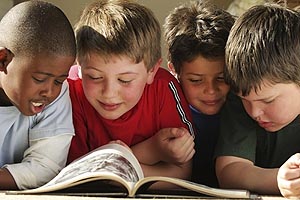| Home I About Us I Success Stories I Articles I Franchise I Contact Us |
|
Home |
Edublox Clinics and Dyslexia
Reading and learning are the two things that determine the success of a child during his school career. First he learns to read. Then he reads to learn. Reading is therefore of paramount importance in the educational process. Unfortunately poor reading skills, and therefore poor learning skills, have become a reality for an alarming number of children. The Institute for Global Education and Service Learning states that 40% of American children have difficulty reading or learning to read, and as many as three-quarters of students who are poor readers in third grade will remain poor readers in high school. The word "dyslexia" is often used to refer to the child who has an average or above average IQ and is reading 1 1/2 grades or more below grade level, and whose reading problem is accompanied by the signs below:
At Edublox we address the causes of learning and reading problems. Because we address the causes and not the symptoms, we are able to solve reading problems effectively. We invite you to browse our website and contact one of our clinics today. |